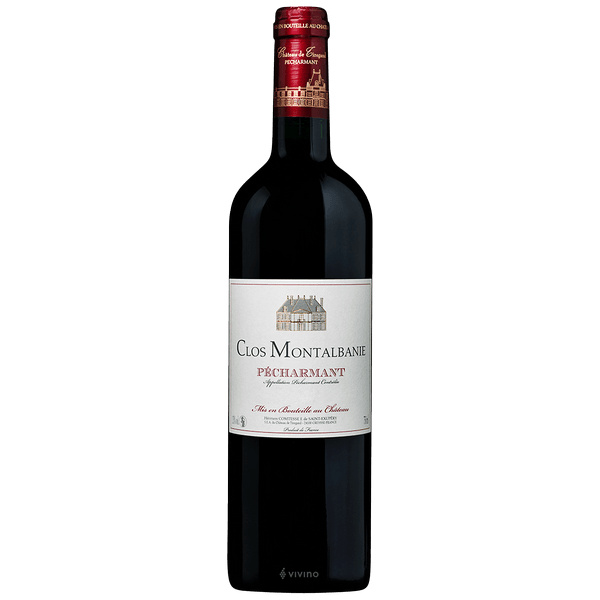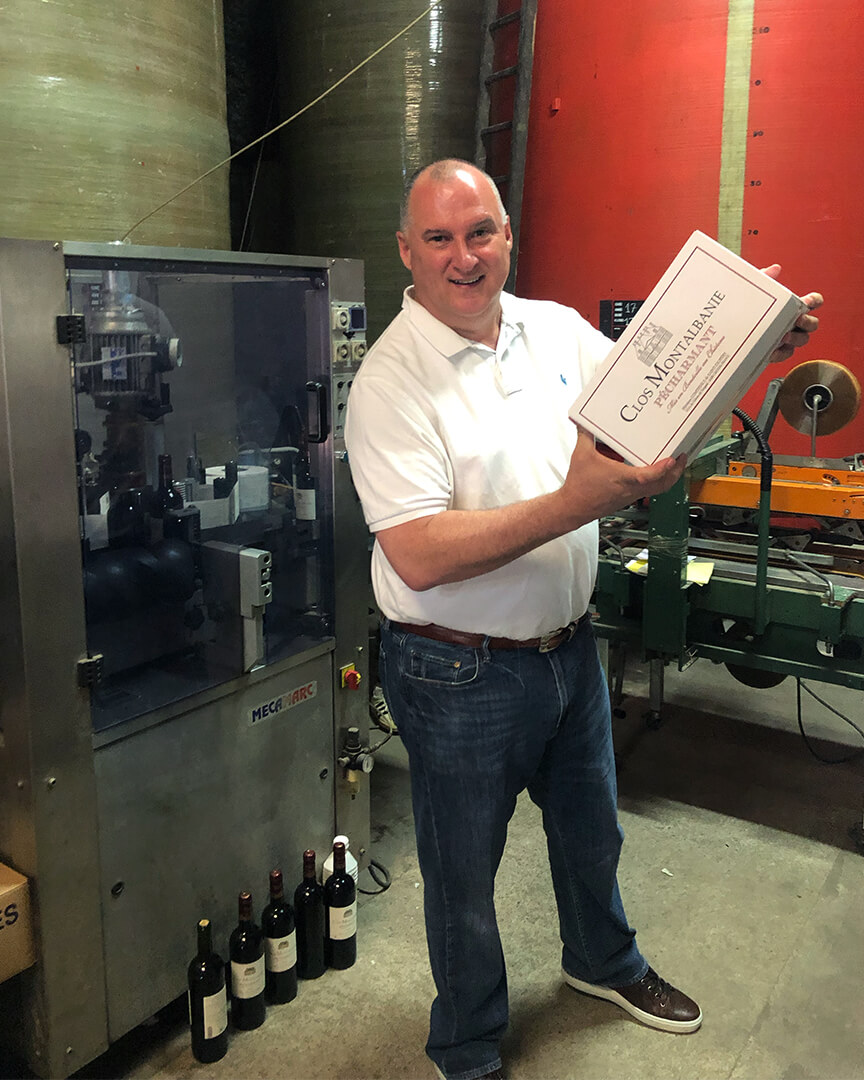(and its fame brought on by Martin Walker’s novel Bruno, Chief of Police)
SPOTLIGHT
Château de Tiregand Pécharmant
One of our favorite wines is the dark and dense Pécharmant from Château de Tiregand.
This deep red wine is a perfect match for heavy, creamy dishes with red meat or cheeses.
A delicious blend, this wine attributes its richness and roundness to each of its compositional parts — Merlot, Cabernet Sauvignon, Cabernet Franc, and Malbec.
The Pécharmant reaches its full potential after 6 or 7 years, but can easily age up to 10-15 years.
The producers at Château de Tiregand use ripe grapes for the Pécharmant, fermenting the wine for 8-10 days, and after a period of daily tasting and maceration, the wine is aged for 12 months in oak barrels.
The Pécharmant is then brought to the U.S. by Anasazi Wines in climate-controlled containers to be enjoyed by its American wine enthusiasts.

SPOTLIGHT
Château de Tiregand Pécharmant
(and its fame brought on by Martin Walker’s novel Bruno, Chief of Police)

One of our favorite wines is the dark and dense Pécharmant from Château de Tiregand.
This deep red wine is a perfect match for heavy, creamy dishes with red meat or cheeses.
A delicious blend, this wine attributes its richness and roundness to each of its compositional parts — Merlot, Cabernet Sauvignon, Cabernet Franc, and Malbec.
The Pécharmant reaches its full potential after 6 or 7 years, but can easily age up to 10-15 years.
The producers at Château de Tiregand use ripe grapes for the Pécharmant, fermenting the wine for 8-10 days, and after a period of daily tasting and maceration, the wine is aged for 12 months in oak barrels.
The Pécharmant is then brought to the U.S. by Anasazi Wines in climate-controlled containers to be enjoyed by its American wine enthusiasts.
The Château de Tiregand Pécharmant was made famous by Bruno, the fictional chief of police in southern France in British journalist Martin Walker’s best-selling detective series Bruno, Chief of Police.
Fascinated by the food and culture of the Périgord, Walker and his wife settled in the Périgord region in 1998.
Since then, Walker has written 15 detective novels and created the world of Bruno and the fictional town of St. Denis, loosely based on Walker’s friend and local chief of police Pierrot Simonet and their small town of Le Bugue, respectively.
His first book — appropriately titled Bruno, Chief of Police — only touched on the wine from the Perigord region. But as Walker developed his taste of the region, befriending the locals and diving into the culture and the importance that wine played in it, his books have reflected that importance, as well.
In fact, one could easily argue that the Périgord is as much a character in the series as Bruno himself.
Today, Walker and his wife live in an old farmhouse with a garden of vegetables and herbs, chickens, and a rooster named Sarkozy. They shop and barter at the local markets on Tuesdays and Saturdays and make homemade local liqueur from green walnuts.
As intrigued as Walker was by the local culture, perhaps what attracted Walker most to the region was the gastronomie and the history.
”"He put one bottle of sparkling Bergerac rosé from Château Haut Garrigue and another of Pierre Desmartis’s white Bergerac Sec into the fridge and opened a bottle of Clos Montalbanie, a lighter red from Château de Tiregand that he thought would go well with the veal."
― from "The Templars' Last Secret: The Dordogne Mysteries 10" by Martin Walker
The Périgord region of southern France, filled with beautiful nature reserves and wildlife, has been occupied since the Neanderthals roamed the area some 70,000 years ago. Walker is fascinated by the region’s history of conflict, from the Moors to the Vikings, the British to the Nazis. It’s also home to the Bergerac area, made famous by the 19th century play Cyrano de Bergerac.
But this play is not the region’s only claim to fame — sitting stately in the region is the Château de Tiregand, an 800-year-old castle owned by the descendants of “Le Petit Prince” author Antoine de Saint-Exupéry.
The chateau is magnificent, surrounded by seemingly endless sloping green pastures above the Dordogne river. The flintrock-rich vineyards on the land produce delicious red, white, and rosé wines at only a fraction of the price of the neighboring Bordeaux region, although the quality is just as superb.
On the grounds is a wine cellar dating back to the 17th century, which allows visitors a glance into the history and process that make the famous Château de Tiregand Pecharmant beloved by our dear friend Bruno.
”"In a separate cardboard box he placed a large paper bag full of his homemade dog biscuits, a bottle of Château de Tiregand from the Grand Millésime year of 2011 and a glass jar containing confit de canard, sealed in its own fat, which he’d made the previous winter."
― from "A Shooting at Chateau Rock: The Dordogne Mysteries 13" by Martin Walker
Walker’s series has taken Europe by storm, and his books do so much to highlight the gastronomic wonders of the region that he was inspired to write a Bruno-focused blog with an extensive wine list of all of Bruno’s favorites. He also created a cookbook (in German!) of Bruno’s favorite recipes.
Interested in checking out Martin Walker’s books for yourself? Take a look. You can also pre-order his latest Bruno novel, The Coldest Case, here.
Unfortunately, the Château de Tiregand Pecharmant is difficult to access in the U.S. - but you’ve come to the right place!
”"They crossed the River Dordogne and caught sight of Château de Tiregand, perched overlooking the valley on the long Pécharmant ridge."
― from "A Shooting at Chateau Rock: The Dordogne Mysteries 13" by Martin Walker






